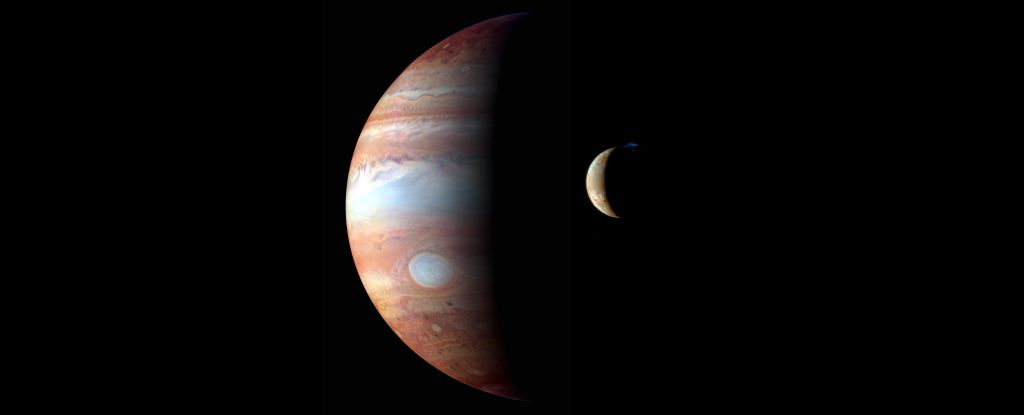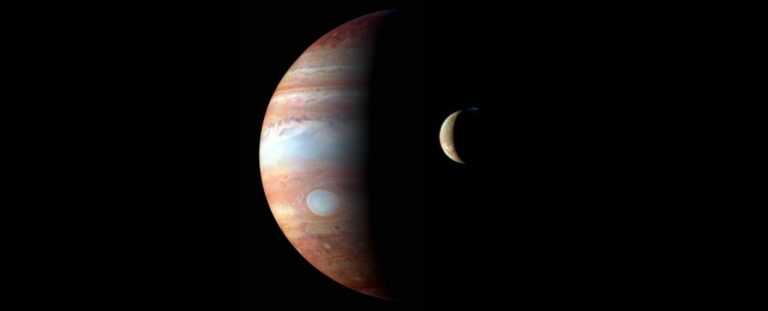Jupiter Overtakes Saturn as The Planet With The Most Known Moons
The battle for the most known moons in the Solar System is raging on.
After losing its lead to Saturn in 2019, Jupiter has once again surged ahead. Astronomers have counted 12 previously unknown moons in orbit around our Solar System’s biggest planet, bringing the known total to 92, and leaving Saturn, with its measly count of 83, in the dust.

The orbits of the moons, which are unnamed, have been published in the circulars of the International Astronomical Union’s Minor Planet Center, which keeps records of all the small bodies discovered in the Solar System.
The observations were led by astronomer Scott Sheppard of Carnegie Institution for Science, who has spearheaded the discoveries after accidentally discovering a plethora of previously unknown Jovian moons during a hunt for the mysterious hypothetical Planet Nine in the outer Solar System.
“Jupiter just happened to be in the sky near the search fields where we were looking for extremely distant Solar System objects,” Sheppard said in 2018, after his team discovered a dozen new moons.
It’s actually not that strange that we’re just now discovering these objects. They’re quite small and dim and hard to see, especially when you have Jupiter right there being all big and reflective.
When looking for evidence of Planet Nine, however, the researchers used a more powerful telescope than ever before, zooming in at higher resolutions, across a wider field of view than other observations in the past.
This allowed them to spot small moons that might have escaped previous detection. According to Sky & Telescope, nine of the newly discovered moons are quite distant from Jupiter, orbiting in a retrograde motion, the opposite direction to Jupiter’s rotation.
This is not weird; most of Jupiter’s moons are retrograde. This motion means they were probably passing rocks that were snared by Jupiter’s gravity and remained in orbit.
The other three moons are closer to the planet, and orbiting in the same direction as Jupiter’s rotation. These smaller, prograde moons are harder to see because Jupiter outshines them, but they probably formed in Jovian orbit.
The moons were spotted in 2021 and 2022. Anything near Jupiter moving across the sky in the same direction and at the same speed is a potential moon, but confirming them takes time.
Follow-up observations need to be made, a month and then a year later, to make sure that the object is still there, still orbiting Jupiter. These follow-up observations can then also be used to map the orbit of the object.
This can tell us about the history of Jupiter and its moons. For example, the retrograde moons are thought to be the remnants of three larger bodies that were captured in Jovian orbit and then broke apart after colliding with other objects. But one of the moons discovered a few years ago, Valetudo, has a prograde orbit that crosses into the orbits of the retrograde moons.
This suggests that the retrograde moons may have been created by collisions with prograde moons with orbits like Valetudo’s. Finding more moons will help either validate or refute this idea.
Meanwhile, it’s extremely likely that there are a lot more moons around both Jupiter and Saturn that we are yet to find. And really, it doesn’t matter which planet has more. There is just one clear winner in this whole race: science.
This article was originally published by ScienceAlert. Read the original article.
Do not forget to share your opinion with us to provide you with the best posts !




0 Comments